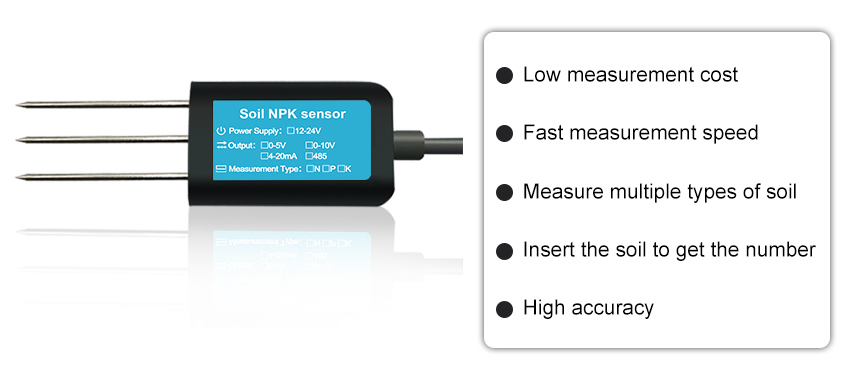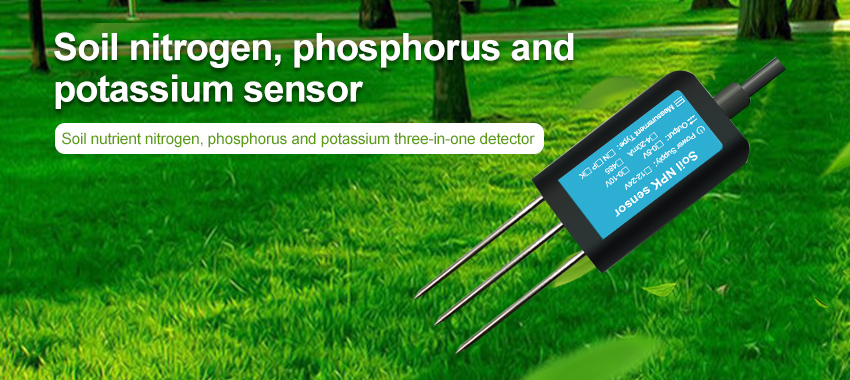Agriculture, the backbone of our society, has always been driven by the quest for increased productivity and sustainable practices. In recent years, technological advancements have played a significant role in revolutionizing the way we approach farming. One such innovation that has garnered attention is the use of soil sensors for optimal nutrient and moisture monitoring. These sensors have the potential to transform agriculture by providing real-time data on soil health, enabling farmers to make informed decisions regarding fertilization, irrigation, and overall crop management. This article explores the significance of soil sensors, their working principles, and the benefits they offer in promoting sustainable agriculture.
The Importance of Soil Health:
Soil health is a critical factor in determining the success and sustainability of agricultural practices. Healthy soil provides the necessary nutrients and moisture required for plant growth, ultimately leading to increased yields and improved crop quality. However, without proper monitoring, it can be challenging for farmers to assess the nutrient levels and moisture content accurately. This is where soil sensors come into play, offering a revolutionary solution for precise soil health assessment.

Understanding Soil Sensors:
Soil sensors are devices designed to measure various properties of the soil, including nutrient levels and moisture content. They employ advanced technology to collect and transmit real-time data, allowing farmers to monitor soil conditions and make informed decisions.
a. Nutrient Sensors:
Nutrient sensors are used to measure the nutrient levels present in the soil. Different types of nutrient sensors are available, such as ion-selective electrodes, optical sensors, and electrochemical sensors. Ion-selective electrodes work based on the principle of ion exchange and provide precise measurements of specific nutrients like nitrogen (N), phosphorus (P), and potassium (K). Optical sensors use light absorption or fluorescence properties to estimate nutrient levels, while electrochemical sensors utilize electrochemical reactions to measure nutrient concentrations.
b. Moisture Sensors:
Moisture sensors, as the name suggests, measure the moisture content in the soil. Capacitance-based sensors, tensiometers, and time domain reflectometry (TDR) sensors are commonly used for this purpose. Capacitance-based sensors analyze electrical capacitance to detect changes in soil moisture, offering accuracy across various soil types. Tensiometers measure soil moisture based on changes in water tension, providing direct measurements of soil moisture potential. TDR sensors analyze the propagation time of electromagnetic pulses to measure soil moisture accurately.
Working Principles of Soil Sensors:
Each type of soil sensor functions based on specific principles. Understanding these principles is crucial to grasp how soil sensors work and provide real-time data.
a. Nutrient Sensor Working Principles:
Ion-selective electrodes work by measuring the concentration of specific ions through ion exchange processes. Optical sensors use the absorption or fluorescence properties of light to estimate nutrient levels. Electrochemical sensors function through electrochemical reactions that generate measurable signals corresponding to the nutrient concentrations present in the soil.
b. Moisture Sensor Working Principles:
Capacitance-based sensors measure changes in soil moisture by analyzing the electrical capacitance between two electrodes inserted into the soil. Tensiometers function using a hollow tube filled with water, measuring soil moisture by observing changes in water tension. TDR sensors send electromagnetic pulses through the soil and measure the time taken for the pulses to return. This time is then correlated to the soil moisture content.

Benefits of Soil Sensors:
The adoption of soil sensors brings numerous benefits to farmers and the agriculture sector as a whole:
a. Precision Management:
Soil sensors provide accurate and real-time data on nutrient levels and moisture content, enabling precise management of fertilization and irrigation practices. With this information, farmers can ensure that crops receive the right nutrients and water at the right time, promoting healthy growth while minimizing resource wastage.
b. Timely Interventions:
Real-time data from soil sensors allows farmers to detect nutrient deficiencies and moisture deficits early on. Timely interventions can be made, such as adjusting fertilization schedules or irrigation amounts, to prevent crop damage and optimize plant health.
c. Resource Efficiency:
Soil sensors assist farmers in optimizing resource usage by providing insights into nutrient availability and moisture content. This reduces excessive fertilizer use and water wastage, promoting sustainable agricultural practices while minimizing environmental impact.







